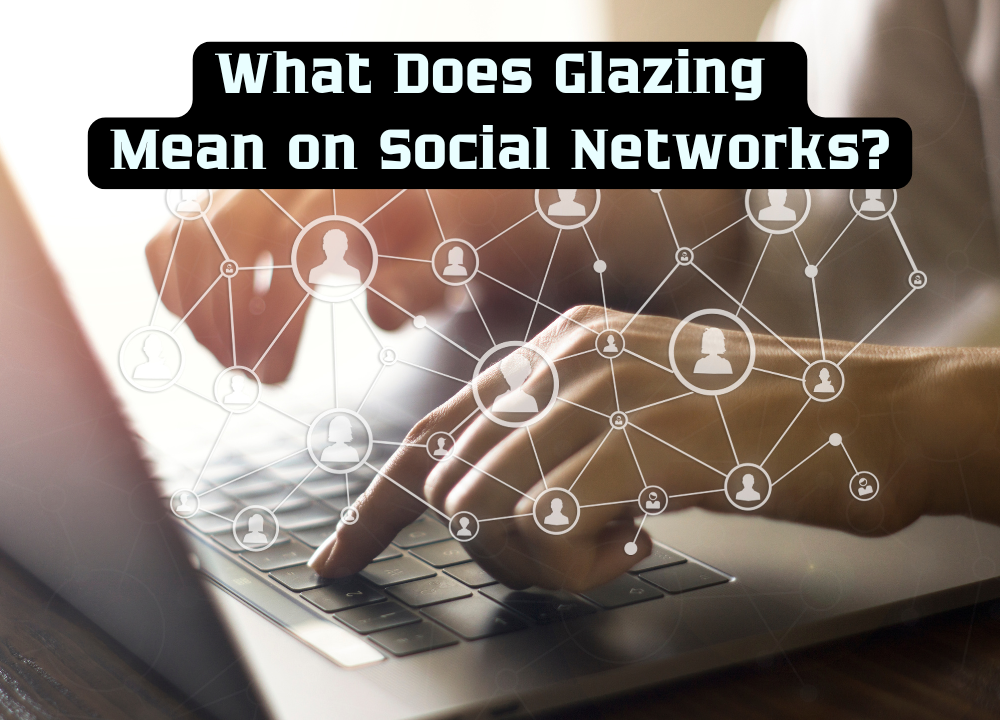Glazing is slang for excessively praising or complimenting someone to the point of being uncomfortable or insincere.
In today’s digital world, social networks shape how we connect and communicate. Many terms arise, creating confusion. One such term is “glazing. ” This can lead to misunderstandings about user engagement. Understanding what glazing means helps users.
What Is Glazing?
Glazing is a term used widely on social networks today. It describes a behavior that many people encounter. What is glazing? It refers to when users give excessive praise or compliments to others online. This can seem insincere or forced.
Origins Of The Term “Glazing”
The term “glazing” has roots in everyday language. It describes the act of putting a shiny surface on something. In social media, it means putting a shiny layer of compliments over interactions. This makes the interaction seem more positive than it is.
Glazing can happen in various ways:
- Overhype of someone’s achievements
- Unrealistic praise for simple actions
- Excessive compliments on posts
This behavior often arises in competitive online environments. Users may feel pressure to show support. They may want to appear friendly or supportive. Yet, this can backfire. It can lead to misunderstandings and fake connections.
Here’s a simple table that highlights some common examples of glazing:
| Situation | Glazing Example |
|---|---|
| A friend’s new job | “You’re the best! This job is amazing! You’ll be a CEO in no time!” |
| A casual post | “Wow! This is the best meal ever! Michelin should give you a star!” |
| Someone’s artwork | “This is the most incredible piece I’ve ever seen! You are a genius!” |
These examples show how glazing can distort reality. It makes ordinary achievements seem extraordinary. This type of interaction can lead to pressure.
How Glazing Has Spread Across Social Networks
Glazing refers to the act of giving excessive praise or compliments, often in a way that feels insincere. Understanding where and how glazing occurs helps decipher modern online interactions.
Glazing On Twitch Streams
Twitch, a platform for live streaming, has seen a rise in glazing among viewers and streamers. Viewers often shower streamers with compliments during their broadcasts. This over-praise serves various purposes:
- To boost the streamer’s confidence
- To create a friendly environment
- To attract attention from the streamer
Many viewers use phrases like “You’re the best!” or “This is the greatest stream ever!” These comments may not always reflect genuine feelings. Instead, they aim to engage with the streamer and the community.
Here’s a simple table showing how glazing appears in Twitch chat:
| Comment Type | Example |
|---|---|
| General Compliment | “Your gameplay is amazing!” |
| Specific Compliment | “Your strategy for this level is genius!” |
| Over-the-Top Praise | “You’re the king of gaming!” |
While some viewers appreciate this style, others may find it overwhelming. Glazing can create pressure for streamers, as they may feel the need to constantly perform at a high level.
Glazing On Tiktok Comments
TikTok users also engage in glazing, particularly in the comments section. Creators receive numerous compliments that often feel exaggerated. This behavior serves to:
- Encourage creators to keep posting
- Build a positive community
- Increase visibility through popular comments
Comments like “You’re so talented!” or “This made my day!” flood the section. Many users aim to stand out by over-praising and over-complimenting creators. This can lead to a cycle where creators feel they must meet high expectations.
Here’s a list of common glazing comments seen on TikTok:
- “This is the best video I’ve ever seen!”
- “You are a genius for making this!”
- “I can’t believe how talented you are!”
Such comments, while often supportive, can distort genuine feedback. They create an environment where creators might feel pressured to produce perfect content.
Why Do People Glaze Others Online?
Many people glaze others for various reasons. Understanding these reasons helps us navigate social media better.
The Psychology Behind Glazing
Glazing often stems from deeper psychological issues. Many individuals use glazing as a coping mechanism. It allows them to avoid confrontation or unpleasant interactions.
Here are some common psychological reasons for glazing:
- Fear of Conflict: Some people dislike confrontation. Glazing helps them escape uncomfortable conversations.
- Low Self-Esteem: Individuals with low self-worth may avoid interactions. They might feel unworthy of attention.
- Social Anxiety: Those with anxiety may glaze others. It reduces their stress in social situations.
Glazing can also reflect feelings of jealousy or resentment. People may glaze those they envy. This response protects their self-image.
In a study, researchers found that:
| Reason | Percentage of Respondents |
|---|---|
| Fear of Conflict | 35% |
| Low Self-Esteem | 30% |
| Social Anxiety | 25% |
| Jealousy | 10% |
Understanding these psychological factors helps us see why glazing occurs. It is not just a simple act of ignoring. It often reveals deeper issues within individuals.
Glazing For Social Status
Glazing can also be a tool for gaining social status. On social media, users often seek approval and validation. Glazing others may enhance their perceived status.
Here are ways glazing relates to social status:
- Control: Ignoring others can create a sense of power. It shows dominance in online interactions.
- Exclusivity: Some users feel special by glazing others. They believe it sets them apart.
- Attention-Seeking: Glazing can attract attention. It may lead others to react or engage.
People often glaze those they consider lower in status. This behavior reinforces their own social standing. It can create a cycle of exclusion.
Research indicates that:
| Behavior | Impact on Social Status |
|---|---|
| Glazing Low-Status Users | Increases perceived dominance |
| Engaging with High-Status Users | Boosts own status |
In summary, glazing serves multiple purposes. It is a psychological response and a tool for social positioning. Understanding these motivations helps to navigate online spaces more effectively.
How To Recognize And Respond To Glazing
Recognizing and responding to glazing can improve your online interactions. Understanding this behavior helps you communicate better and build stronger connections.
Spotting Glazing In Comments And Chats
Identifying glazing can be tricky. People might seem interested, but their responses lack depth. Here are some signs to look for:
- Short Responses: Look for one-word answers or vague comments.
- Generic Replies: Comments that do not relate to the topic.
- Lack of Questions: They do not ask anything back.
- Delayed Replies: Long pauses between messages.
Consider this simple table for clarity:
| Behavior | Indicator of Glazing |
|---|---|
| One-word answers | Shows little interest |
| Vague comments | Not engaging with content |
| No follow-up questions | Not curious about you |
| Long response times | Possible distraction |
Be aware of these signs. They can help you spot glazing in online conversations. Understanding these patterns can save you time and energy in your social interactions.
Should You Glaze Someone Back?
Responding to glazing can be a challenge. You might feel tempted to glaze back. This can lead to a cycle of disengagement. Think about the following:
- Evaluate the Relationship: Is this person important to you?
- Consider the Context: Are they busy or distracted?
- Assess Your Feelings: Do you want to connect or move on?
Sometimes, glazing back can feel satisfying. But it rarely helps build a better connection. Instead, try to engage more meaningfully. Ask open-ended questions. Show genuine interest. This can help break the cycle of glazing.
Remember, communication is a two-way street. If someone glazes, it does not mean they dislike you. They may just be preoccupied. Choose wisely how to respond. Focus on building a real connection.

